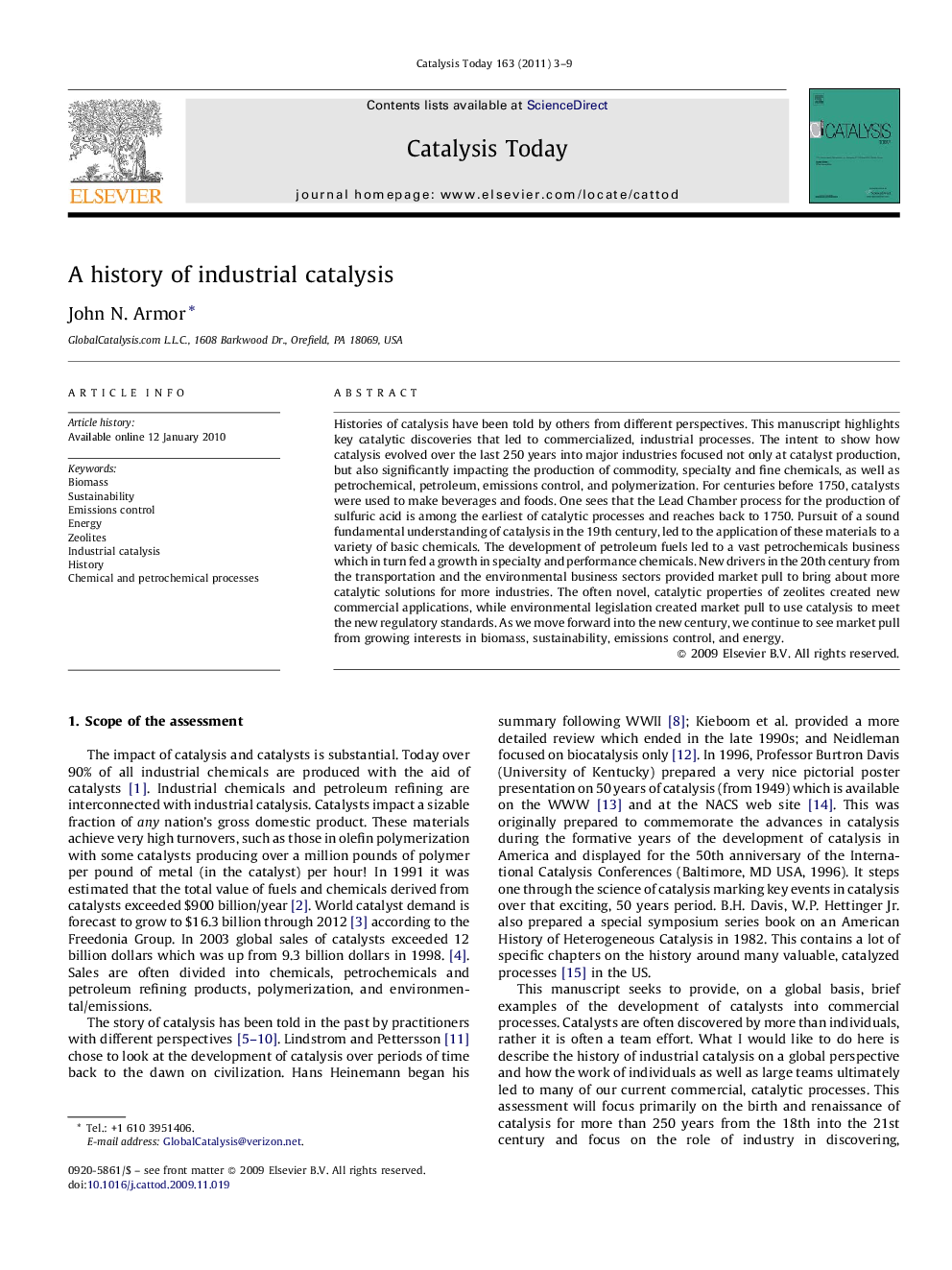| Article ID | Journal | Published Year | Pages | File Type |
|---|---|---|---|---|
| 56091 | Catalysis Today | 2011 | 7 Pages |
Histories of catalysis have been told by others from different perspectives. This manuscript highlights key catalytic discoveries that led to commercialized, industrial processes. The intent to show how catalysis evolved over the last 250 years into major industries focused not only at catalyst production, but also significantly impacting the production of commodity, specialty and fine chemicals, as well as petrochemical, petroleum, emissions control, and polymerization. For centuries before 1750, catalysts were used to make beverages and foods. One sees that the Lead Chamber process for the production of sulfuric acid is among the earliest of catalytic processes and reaches back to 1750. Pursuit of a sound fundamental understanding of catalysis in the 19th century, led to the application of these materials to a variety of basic chemicals. The development of petroleum fuels led to a vast petrochemicals business which in turn fed a growth in specialty and performance chemicals. New drivers in the 20th century from the transportation and the environmental business sectors provided market pull to bring about more catalytic solutions for more industries. The often novel, catalytic properties of zeolites created new commercial applications, while environmental legislation created market pull to use catalysis to meet the new regulatory standards. As we move forward into the new century, we continue to see market pull from growing interests in biomass, sustainability, emissions control, and energy.
